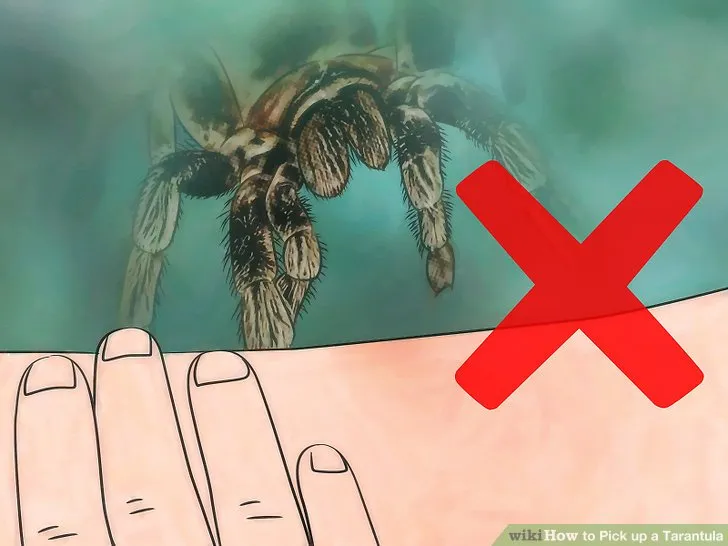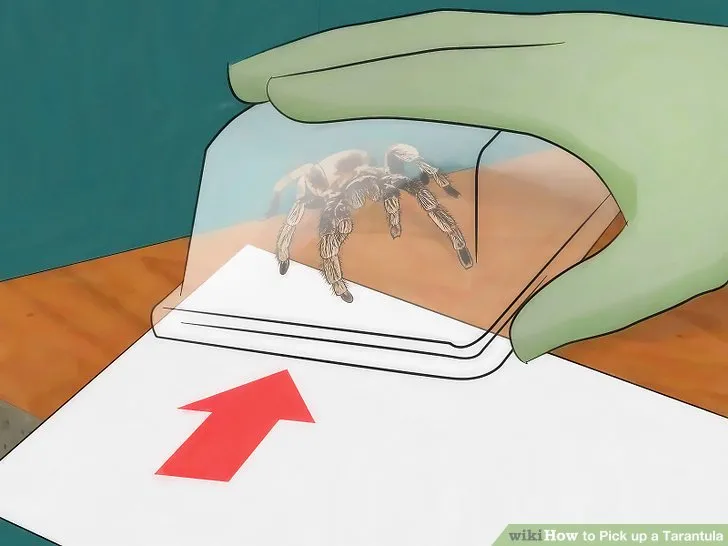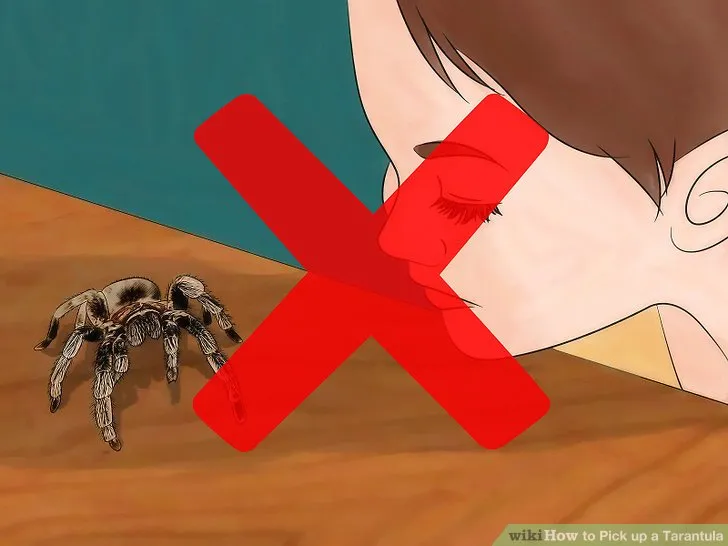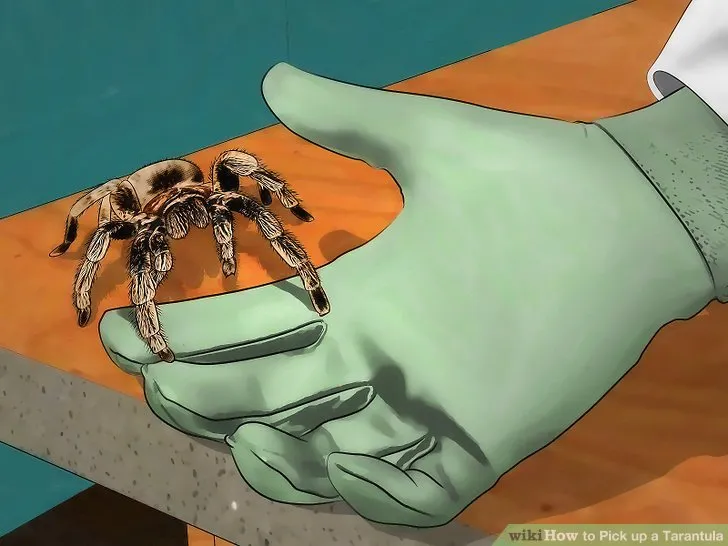Understanding Tarantulas Behavior & Safety
Handling a tarantula can be a rewarding experience for any arachnid enthusiast, but it’s crucial to approach it with knowledge, caution, and respect for the animal’s well-being. Tarantulas, despite their intimidating appearance, are generally docile creatures. However, they are not naturally inclined to be handled, and improper handling can lead to stress for the tarantula and potential injury for the handler. This guide provides comprehensive instructions on how to safely and effectively handle your tarantula, focusing on the animal’s welfare and your safety. Understanding the spider’s behavior, preparing the environment, and using the right techniques are key elements in a safe handling experience. This guide aims to equip you with the knowledge needed to interact with your tarantula responsibly and enjoyably.
Tarantula Temperament What to Expect
Tarantula temperament varies greatly from species to species, and even between individual spiders within the same species. Some tarantulas are known to be more docile and tolerant of handling, while others are skittish, defensive, or even aggressive. It is vital to research the specific temperament of your tarantula’s species before attempting to handle it. Generally, Old World tarantulas are considered more defensive and have a higher likelihood of biting compared to New World species. However, even a seemingly docile species can become defensive if it feels threatened or stressed. Tarantulas may exhibit various behaviors, such as flicking urticating hairs (in New World species), raising their front legs in a threat posture, or attempting to flee. Recognizing these behaviors is essential for determining whether handling is appropriate.
Factors Influencing Tarantula Behavior

Several factors can influence a tarantula’s behavior and its willingness to be handled. These include the tarantula’s overall health, recent molting, current mood, and environmental conditions. A tarantula that has recently molted will be particularly vulnerable and should never be handled until its exoskeleton has fully hardened. A stressed or hungry tarantula may be more likely to act defensively. Environmental factors, such as excessive noise, bright lights, or a cramped enclosure, can also contribute to stress. Always assess the tarantula’s living conditions and overall well-being before considering handling. Be mindful of the time of day, as tarantulas are often more active and potentially more reactive during their feeding or hunting times, typically around dawn and dusk. Providing a comfortable and stress-free environment is paramount to your tarantula’s health and happiness.
Assessing Your Tarantula’s Mood
Before any handling attempt, carefully observe your tarantula. Look for signs of stress or aggression. A defensive posture, with the tarantula raising its front legs and displaying its fangs, is a clear indicator that it does not want to be handled. Rapid movement, a tense body posture, or flicking of urticating hairs (in New World species) are also signs of stress. If your tarantula exhibits any of these behaviors, it is best to postpone handling and reassess its mood at a later time. A calm tarantula will generally be relaxed, with its legs spread out and its body posture neutral. It is important to remember that tarantulas do not have facial expressions, so paying attention to their body language is key. If in doubt, it is always better to err on the side of caution and avoid handling.
Preparing for Handling Essential Steps
Preparation is crucial for a safe and successful handling experience. This involves setting up the environment, gathering necessary equipment, and choosing the right time. Proper preparation minimizes stress for the tarantula and reduces the risk of accidents. Plan your handling session carefully, and never rush the process. Take your time to ensure everything is in place, and be prepared to abandon the handling attempt if the tarantula shows any signs of distress or is not cooperative. This proactive approach will contribute to a more positive experience for both you and your pet tarantula. Always prioritize the tarantula’s safety and comfort above your desire to handle it. Patience and a calm demeanor are your best tools during the entire process.
Setting Up the Environment for Handling

Choose a handling location that is safe and minimizes the risk of escape. A clear, uncluttered surface, such as a table or desk, is ideal. Place the enclosure near this surface, so the tarantula can be easily returned to its home if needed. Make sure the area is free from potential hazards, such as small objects or other pets. If possible, handle your tarantula in a room where you can easily control access and prevent interruptions. Dim the lights to create a calmer environment, as bright lights can stress tarantulas. Have a clear understanding of the handling area and ensure it’s well-prepared before beginning the handling process. Being methodical and controlling the environment will prevent unwanted escapes and stress.
Gathering Necessary Equipment
Before you begin, gather the necessary equipment. While some experienced keepers handle tarantulas with their bare hands, it’s generally safer to use tools, especially for beginners. A soft, wide paintbrush can be used to gently guide the tarantula. Long tweezers or tongs are useful for moving the tarantula or removing any obstacles, without putting your hands close to the tarantula’s fangs. Always have a clear container or enclosure available for returning the tarantula. It is recommended that you wear gloves for extra protection. Prepare a first-aid kit that includes antiseptic wipes, in case of an accidental bite. Ensuring that you have the right tools at your disposal enhances your safety and enables you to handle the tarantula with more confidence. A calm and well-prepared approach is better for everyone.
The Right Time Choosing the Best Moment
The time of day and the tarantula’s overall well-being play a significant role in determining the best time for handling. Avoid handling your tarantula right after it has eaten, as it may be more defensive. Similarly, do not handle your tarantula if it is in the process of molting or has recently molted, as its exoskeleton will be extremely vulnerable. The best time to handle a tarantula is when it appears calm and relaxed, and has not recently undergone any significant stress. Be mindful of the time of day, as tarantulas can be more active at dawn and dusk. If you are unsure about the tarantula’s mood or comfort level, it is always best to wait and reassess. Never force handling, and respect the tarantula’s boundaries.
Step-by-Step Handling Techniques

When you are ready to handle your tarantula, follow these steps carefully. Start by approaching the enclosure calmly and gently. Avoid making sudden movements or loud noises. Speak softly to the tarantula to reassure it. The primary goal is to handle the tarantula in a way that minimizes stress and reduces the chance of a bite. It is important to be patient and move at a pace that is comfortable for the tarantula, being careful not to startle it. Proceed slowly and observe your tarantula’s body language continuously to ensure that your actions are not causing the spider distress. Do not force the tarantula to move, if it is showing any signs of discomfort. Remember, the tarantula’s welfare is the priority.
Approaching the Tarantula
Slowly and gently open the enclosure. Speak to your tarantula in a calm, reassuring voice. Avoid sudden movements or loud noises, which can startle the spider. Observe the tarantula’s body language. If it appears relaxed and is not displaying any signs of stress or aggression, you can proceed. If the tarantula retreats or shows any signs of defensiveness, it’s best to postpone handling and try again later. The key is to create a relaxed atmosphere, providing a safe and comfortable experience for the tarantula.
Using a Handling Tool or Method
If using a handling tool, such as a paintbrush, gently guide the tarantula. Never attempt to grab or force the tarantula. Instead, softly touch its body with the brush to encourage it to move in the desired direction. If the tarantula remains uncooperative, do not force it. Allow the tarantula to move onto the brush, and then slowly lift it. Some keepers use a clear container to gently coax the tarantula into it. This method is particularly useful for moving a tarantula from its enclosure to a handling area. Regardless of your chosen method, always prioritize gentle and patient interaction. Do not attempt to handle a tarantula that is clearly unwilling or shows signs of distress.
Supporting the Tarantula’s Body

When the tarantula is on your hand or the handling tool, support its body carefully. Avoid any sudden movements or actions that could cause it to fall. Keep your movements slow and deliberate. If using your hand, allow the tarantula to walk onto your palm. Ensure that you are holding it close to the handling surface to minimize the risk of injury if it falls. Never squeeze or grip the tarantula, which could injure it. Observe the tarantula constantly to ensure it is comfortable and not exhibiting any signs of stress. The goal is to create a stable and secure environment to encourage the tarantula’s comfort.
Post-Handling Care
After handling your tarantula, it’s important to take the appropriate post-handling care measures. This includes returning the tarantula to its enclosure, cleaning and sanitizing any tools, and observing the tarantula for any signs of stress or injury. Careful post-handling care helps to maintain the tarantula’s health and create a positive experience. Proper care also promotes a safe environment for the tarantula. This methodical approach minimizes any potential risks, and ensures the wellbeing of the animal. The goal is to ensure the safety and the health of the animal.
Returning the Tarantula to Its Enclosure
Gently return the tarantula to its enclosure. Place the tarantula close to the substrate or a familiar area within the enclosure. Allow it to walk off your hand or the handling tool at its own pace. Do not try to force the tarantula back into its enclosure, which could cause stress or injury. Watch the tarantula to ensure it is settled and comfortable. If the tarantula retreats or displays signs of stress, give it space and leave it alone for a while. Observe its behavior for a few hours after handling, looking for any changes in its activity levels or eating habits. Once the tarantula is safely back in its enclosure, close the lid and allow it to rest.
Cleaning and Sanitizing

After handling, clean and sanitize any handling tools, such as the paintbrush or tweezers, with warm water and soap. Allow the tools to dry completely before storing them. This helps prevent the spread of bacteria or parasites. Wash your hands thoroughly with soap and water. Clean the handling area to remove any traces of the tarantula or substrate. It is very important to practice good hygiene during the handling process. Maintaining a clean and sanitary environment promotes the well-being of the tarantula. It also helps prevent the spread of any potential disease, and ensures the handling experience stays safe.
Handling Mistakes to Avoid
Avoiding common handling mistakes is crucial to ensuring the safety of both you and your tarantula. These mistakes can stress the tarantula, potentially leading to bites or other issues. It is important to be mindful and learn from the mistakes of others. This will promote responsible and safe handling practices. By educating yourself on the pitfalls and making informed choices, you are contributing to a healthier and safer experience. Being careful will help you and your tarantula have a more positive experience.
Common Handling Errors
Some of the most common handling errors include attempting to handle a tarantula when it is stressed or defensive. Forcing a tarantula to move or not giving it enough space can also lead to stress. Other errors include making sudden movements, loud noises, or dropping the tarantula. Another mistake is handling a tarantula immediately after feeding. Another is handling it after molting. Incorrect handling techniques, such as squeezing or gripping the tarantula, are also common. It is important to be well-informed to avoid these mistakes.
How to Prevent Accidents

To prevent accidents, always assess your tarantula’s mood before handling. If it appears stressed, postpone handling. Never attempt to grab or force the tarantula. Always use appropriate handling tools and techniques. Support the tarantula’s body to prevent falls. Handle the tarantula close to a soft surface in case of an accidental drop. Regularly inspect the enclosure for potential escape routes. Ensure the lid is securely closed after handling. Provide a calm and stress-free environment. Take time and be patient. By following these precautions, you can significantly reduce the risk of accidents and ensure a safe handling experience for you and your tarantula.
Handling Risks & Precautions
While tarantulas are not typically aggressive, there are inherent risks involved in handling them. Understanding these risks and taking appropriate precautions is essential for your safety. Awareness of the potential hazards is the first step to minimizing risks. Always be prepared for unexpected behavior and react accordingly. Practicing safe handling techniques and being mindful of your surroundings are essential for reducing risks. Being prepared is your best tool.
Understanding Tarantula Bites
While tarantula bites are not usually life-threatening to humans, they can be painful and cause a range of symptoms. The severity of a bite depends on the tarantula’s species and the individual’s sensitivity. The symptoms may include localized pain, redness, swelling, itching, and muscle cramps. In some cases, the symptoms may persist for several days or even weeks. It is always wise to take a bite seriously and be prepared.
Dealing with a Tarantula Bite
If you are bitten by a tarantula, remain calm and follow these steps. First, wash the bite area thoroughly with soap and water. Apply a cold compress to reduce pain and swelling. Monitor the bite site for any signs of infection, such as increased redness, swelling, or pus. Seek medical attention if you experience severe symptoms, such as difficulty breathing, dizziness, or any signs of an allergic reaction. Even if the symptoms are mild, it’s a good idea to consult with a doctor. Keep the bite clean and dry, and avoid scratching it. Remember, while tarantula bites are not typically life-threatening, they can be uncomfortable and should be treated with care. Take it seriously.
